Katsuo Tataki
Katsuo Tataki is a form of sashimi. Japanese have been known for our fondness for Katsuo. Almost all soup in Japanese cuisine is based on the broth of the smoked and fermented fillet (Katsuo Bushi).
Katuo Tataki is lightly grilled sashimi, garnished by ginger, garlic, raw onions, and other fresh herbs. One thing about bonito is that it’s full of unsaturated fats. Unsaturated fats are ready to intereact, so good for your health. But it also means it’s fast to go bad.
If you leave the fillet raw, it lasts only a day. Making Tataki makes the freshness last longer because the raw flesh inside is coated by the grilled surface. If you catch it on Sunday and close it properly by Ike-Jime, it’s best to eat by Tuesday.
A little bit about Katsuo family
Mack Tuna
This is Suma. Euthynnus affinis, or mackerel tuna. Amongst all Tuna family, I think it’s the tastiest. The flesh is dark red. The taste is rich and juicy. So tasty.
It’s got black dots on the belly under the pectoral fin. When you see those dots, whatever you do, DO NOT throw away the fish!
Katsuo
This is common Katsuo, or skipjack tuna, Katsuwonus pelamis. This is the fish that has captured the Japanese fondness. It’s got the distinct stripes on the belly. They migrate from the tropics to subarctic waters in a large school, while Suma moves in small groups in tropical to sub-tropical waters. They migrate from the south to the north along Japan’s coast. We call them “the first katsuo”. The taste is refreshing and light. In the fall, they come back down the coast from the north. They carry fats now. We call them “returning Katsuo”. The taste is rich and juicy. So tasty.
Bonito
This is called Mackerel Bonito, or Striped Bonito. Sarda orientalis. It’s got sharp teeth. The flesh is soft and watery, and pale pinkish in color. It’s not considered as delicacy as others but the taste is good. Especially at the end of summer when they start putting on some fats, the taste is just as good as other tunas. But sushi chefs don’t serve it usually because it can’t hold the shape of its own, it’s quick to go bad, and the color does not look like Katsuo. You should cook it to appreciate it.
[margin10]
Small Tuna
This is called Frigate Tuna in Auxis family. They are coastal fish and they usually move around the surface. Not really a jigging target. They taste pretty good, but they are really fast to go bad.
Katsuo Tataki!!
Let’s start cooking.
Get the head off and guts out.
This is Suma that I luckily caught. You can’t really target this fish. A lot of times they attack jigs in mid-water while you are just retrieving to collecting your jig.
They have evolved to lose scales for the speed of swimming. Instead, they developed hard skin behind the pectoral fins and along the back. Scrape it off with your knife.
Along the back like this too. Just slide the knife along the back and the blade will go under the tough skin.
Slice into the dorsal fins from both sides. Then hold the fin, have the back upward, and just run your knife along the top of the back to scrape off all the dorsal fins. They come off pretty easily.
Now it’s ready to fillet.
You can skin it with your hand. But we are doing Tataki and we’re leaving the skin on, saving fats under the skin.
Dark reddish meat. It’s the signature of Suma. Other Bonitos are more pinkish. The dark brown meat down the middle usually smells too fishy with other tuna family, but not this one.
Slice off down the middle to get the series of bones.
It is traditionally supposed to be grilled by open flame like this. You just want to grill the surface in a short time. All the dried straws from the rice field bring high heat and the smoky aroma.
The open flame is best to grill if you can. But I hardly get a chance like that, so I use a gas burner in the kitchen. Lightly grill the surface of all sides.
Immediately put it in the iced water for maybe 10 seconds. Don’t let it soak for a long time. This is just to take off some heat to prevent the heat to penetrate into the meat. Some people do not even bother to ice it.
Wipe off the water well.
Soak sliced raw onions in a bowl of water. 5 to 15 minutes. This is to take out the pungent and lingering aftertaste. With this one step, raw onion becomes a “must” garnish.
Prepare all the garnish. I have here raw onions, grounded ginger, Shiso or perilla leaves, spike of ginger.
Any of your favorite fresh herbs could go in here. Garlic would be great too.
Now slice into sashimi. Tataki is beautifully done.
If the meat is thick enough, you can just slice it straight down. You are looking for a size of one bite.
If the meat is not thick enough, you can slice down diagonally. You want to slice down in a way that you cut the fibers in the meat. If you look close, you’ll see the fibers running in the meat, coming out from the spine, curving backwards toward the outer side. You want to cut the fibers so that you have these stripes of fibers in sashimi like this.
Now decorate in whatever way with the garnish on the plate.
Pour over Pon-zu.
If you don’t have Pon-zu. Sprinkle a squeeze of citrus over it. Lemon, grapefruit, or anything. And soy sauce and vinegar. Any vinegar will do. I personally love Balsamic, black vinegar and other aged vinegar. You can also put some oil over it too. My favorite is sesame oil. So it’s like salad dressing. Use your creativity.
Related Posts
14 Comments
Leave a Reply Cancel reply
Categories
- 1. SPJ (57)
- 1-1. Principles (9)
- 1-2. Techniques (11)
- 1-3. Setup (17)
- 1-4. FAQ (19)
- 1-5. Tackles (3)
- 1-6. Video Gallery (2)
- 2. Other Offshore Games (5)
- 3. Fishing Report (105)
- 3-1. Totos (25)
- 3-2. Readers (72)
- 4. Fish Cooking (19)
- 4-1. Iki-Jime (3)
- 4-2. The Art of Sashimi (5)
- 4-3. Recipe (7)
- 4-4. Seasoning (3)
- 5. Fishing Charter (6)
- Fish (12)



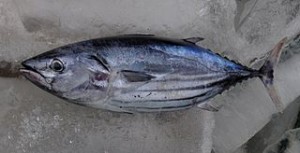

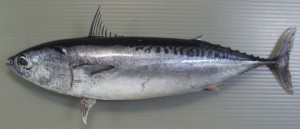
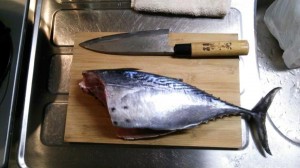

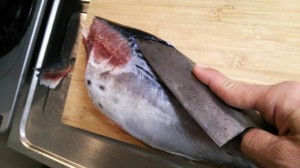
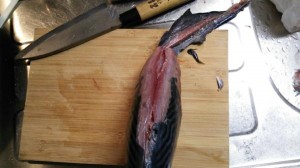

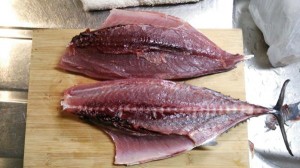
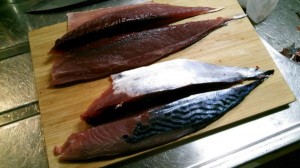




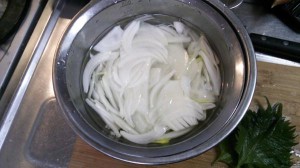
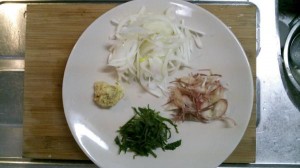





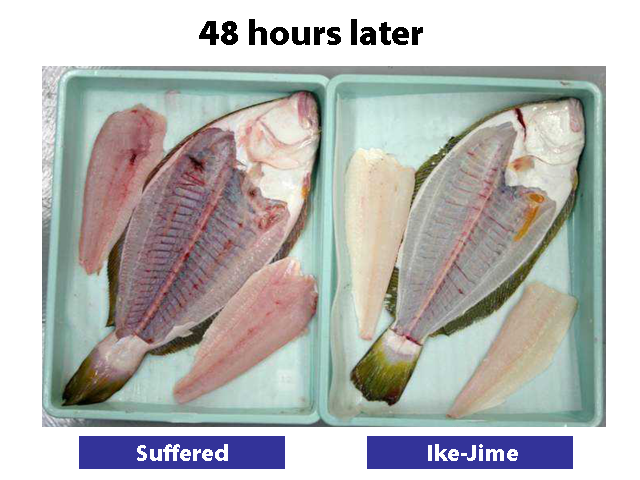

Hi my friend,
That Suma looks delicious. Can I come over for tasting?
Hey Eddie. You had your chance, and you chose Ramen instead!
But hey, what can I say, you gotta have that Ramen before you left Okinawa.
Next time. Always leave something undone to come back.
At certain times of the yeah, you could come here and be the happiest man alive….
I mean year of course.
Daz, that suggests that he isn’t already the happiest man alive! Have you seen that grin?! Totos, the cooked flesh appears surprisingly pale (and good) in your photos. It is really fascinating seeing how much you enjoy these, when we avoid them here on so many occasions (even yesterday I threw several back). From memory, last time i tried to cook a mack tuna, the flesh was an unappealing grey colour. But you now have me determined to give it a try… tataki style. I might even invite Daz to try some (he’s fussy). I’ll let you know mate.
Thank you Ben! That’s the spirit mate!
I’m sure Daz only meant that you guys catch a lot of these fish there. And I appreciate his invitation to come over to Australia. But, Daz, you should try this and you’ll be the happiest man yourself!
Ben, I don’t know why the flesh looked grey… Sometimes fish has so much fat and develops a layer of fat just underneath the skin, and if you skin it fine, you leave that layer on the flesh and it looks grey. But if that’s the case, it should look very appealing.
Or the grey may be the sign of oxidation. I cut open just before cooking. Did you cut open on the boat? If you close it correctly with Ike-Jime, you don’t have to take out the gills and guts.
If you have some flesh left or decide not to eat sashimi, I suggest to make “confit”, something like oil sardine.
1. Put much salt on it and leave it for a couple of hours. It helps drain some “fishiness”.
2. Rince and wipe well.
3. Soak in oil with garlic, chili and herbs in a pot and put on heat to just before boiling, like 70C, and keep the low heat for about 30 minutes. Watch for not to boil.
This is so much better than the tuna can. You can have it with bread and wine, put it in pasta or salad. It’s good for about 10 days too.
Ben, you are right. My fishing completes when I eat the catch.
Thanks Totos, I really enjoy the communications in this blog. I’ll report back soon!
Dear Totos
For mackerel bonito or Oriental bonito aka Sarda Orientalis , how did you prepare the fish in terms of cooking them ? Since you mentioned the meat as pinkish and softer than the rest.
What about the frigate tuna , is this fish suitable for tataki too ? kindly advice
Hi Johan.
Yes, mackerel bonito is less tasty than others and the flesh is somewhat watery in sashimi quality. What I would recommend for this fish or any other tuna fish when there’s some left over sashimi is confit (French). Deep fry in olive oil in a very low temperature like 70C degrees. You can put garlic and red pepper like Spanish, or not. Low temperature cooking extracts the juice out of the flesh and the oil wears the rich flavor. It’s a great preserved food too. It lasts a month. You can make tapas on the bread, make sandwich, or make pasta. It’s a great seasoning. Far different from what you know as a tuna can!!!
The frigate tuna is good as sashimi or tataki, yes.
[…] Tataki if you ever see it on the menu! You can also try doing it at home, here is a good recipe: http://anglers-secrets.com/v2020/katsuo-tataki/ You MAY start thinking of them as something other than just good bait… Len Finest Kind ] […]
Hi Totos,
Your blog convinced me to try some SAMA. Normally, these “Bonito” woultd be thrown back, or used as bait…I think I will be saving at least one small one from now on…
Check out my posting and Pic here:
http://forums.floridasportsman.com/showthread.php?207457-Bonito-Recipe-and-it-DOES-NOT-involve-a-plank&p=2599260#post2599260
Best regards,
Len
Hi Len.
Great! Glad that the information helps you enjoy the fish even more!!
amazing. love this blog. I catch bonito off the florida coast (port canavral) from time to time. Now i am going to keep them. should I keep the small ones or BIG bonito?
I would think the bigger have more fat so better correct?
thanks for sharing your amazing knowledge.
Thank you Shachar.
Bonito can mean different fish. Euthynnus affinis and Katsuwonus pelamis are very good to eat. Sarda orientalis, the one with teeth, is not so good.
These fish are quick to go bad, but if you prepare well, the fish is very tasty the next day. Make sure you give it instant death (no suffering) at the catch and bleed in the ocean water bucket for 10 minutes, before you put it in your cooler box. Break down the spinal cord if possible. Ike-Jime shows very effective with these fish.
http://anglers-secrets.com/v2020/how-to-keep-fish-fresh/